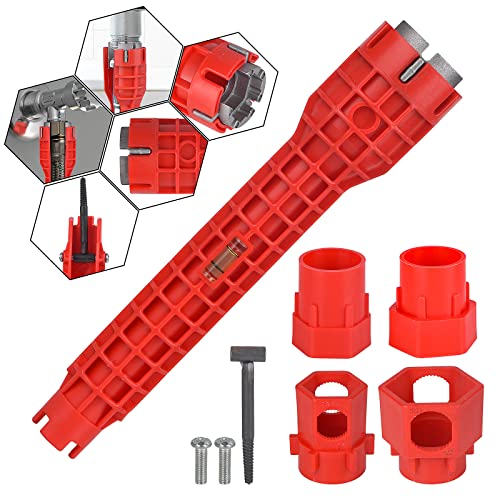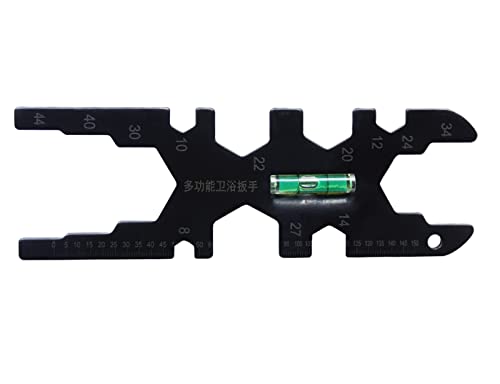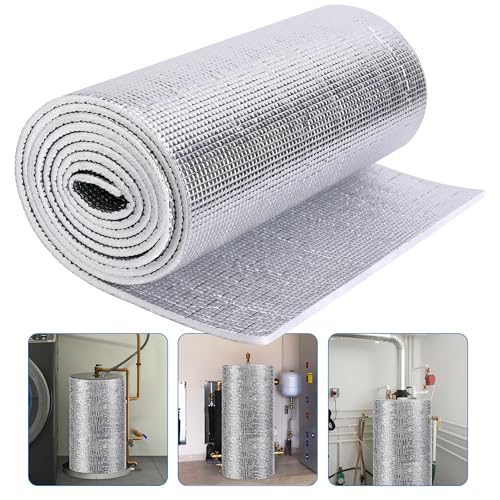A self-feed bit is a much better choice.If you are concerned about the splintering a spade bit will create, suggest you implement a "backer" board behind each joist you drill.
You are using an out of date browser. It may not display this or other websites correctly.
You should upgrade or use an alternative browser.
You should upgrade or use an alternative browser.
Running PEX through ceiling joists
- Thread starter rustic_philosopher
- Start date

Help Support Plumbing Forums:
This site may earn a commission from merchant affiliate
links, including eBay, Amazon, and others.
rustic_philosopher
Well-Known Member
Appreciate the info but still a little confused about which direction we are talking about.The 2" from edge of hole to top and bottom is an established guide. The 2" from edge of hole to edge of hole I mentioned above is to provide adequate support between the top and bottom of the joist. I simply doubled that to determine the 4" edge to edge as a safety factor based on non-smooth hole.
There is a question that is often asked of engineering students. "What is the purpose of the web in an I-beam?" The answer is, "To keep the upper and lower flanges apart." In other words, the strength of an I-beam is based on the top and bottom flanges. Translating that to a joist. as long as you can keep the integrity of the top and bottom areas of the joist intact, and the center part of the 2x6 such that it maintains the separation of the top and bottom areas of the joist, you are good.
I understand that I need 2" from the top of the beam to the bottom of the beam and thus should drill the hole in the middle of the 2x6 (so center at roughly 2.75").
Beyond that though, I also am concerned about how far further down the board (as I need to drill holes for 2-3 holes) I can drill another hole which I read your response as saying 4" - did I understand you correctly? If so, I then was curious on if there was any specific reason the horizontal movement required 4 vs 2 or just a gut feel sort of deal.
rustic_philosopher
Well-Known Member
Sorry, can you explain what you mean by "implement backer board"? Do you just mean attach another piece of board behind the joist that I am going to drill through? If so, should it be screwed in or just clamped and is it permanent or temporary?A self-feed bit is a much better choice.
On the topic of reinforcement though, I asked previously but got no response:
- I was wondering if applying 12" mending plates / straps to the joists would be a good idea? If so, any advice on how to apply them in terms of how many, location, etc? Should I put one on each side to sandwhich the joist - or one on top only or on just one side? Does top vs bottom matter?
clamping a scrap board/whatever is all that is required. That board will afford splinter free holes for the joists.Sorry, can you explain what you mean by "implement backer board"? Do you just mean attach another piece of board behind the joist that I am going to drill through? If so, should it be screwed in or just clamped and is it permanent or temporary?
On the topic of reinforcement though, I asked previously but got no response:
Can anyone weigh in on if that is a good idea and how many / where you would suggest installing them on the joist? One per hole, a sandwhich per hole, etc?
- I was wondering if applying 12" mending plates / straps to the joists would be a good idea? If so, any advice on how to apply them in terms of how many, location, etc? Should I put one on each side to sandwhich the joist - or one on top only or on just one side? Does top vs bottom matter?
Appreciate the info but still a little confused about which direction we are talking about.
I understand that I need 2" from the top of the beam to the bottom of the beam and thus should drill the hole in the middle of the 2x6 (so center at roughly 2.75").
Beyond that though, I also am concerned about how far further down the board (as I need to drill holes for 2-3 holes) I can drill another hole which I read your response as saying 4" - did I understand you correctly? If so, I then was curious on if there was any specific reason the horizontal movement required 4 vs 2 or just a gut feel sort of deal.

From GReynolds929 post:

So, for a 2x6:

And as I said in #16, I would use 4" spacing rather than the 2" guideline as a safety factor rather than the 2" minimum.
The quality of today's lumber sucks. A "backing board" with a spade bit will help on the outlet side of the hole, but the inlet side is still prone to splintering caused by the lack of the squareness of the hole and the state of the lumber. A self-feed bit is the best fix to reduce splintering. So, it is up to you to use the 2" minimum or increase it to 3" or 4".
As to reinforcement, I answered that in #4. But now knowing your actual conditions, I would simply drill the holes with a self-feed bit of the appropriate size and leave 3" or 4" of wood between the holes without any reinforcement required.

So, for a 2x6:

And as I said in #16, I would use 4" spacing rather than the 2" guideline as a safety factor rather than the 2" minimum.
The quality of today's lumber sucks. A "backing board" with a spade bit will help on the outlet side of the hole, but the inlet side is still prone to splintering caused by the lack of the squareness of the hole and the state of the lumber. A self-feed bit is the best fix to reduce splintering. So, it is up to you to use the 2" minimum or increase it to 3" or 4".
As to reinforcement, I answered that in #4. But now knowing your actual conditions, I would simply drill the holes with a self-feed bit of the appropriate size and leave 3" or 4" of wood between the holes without any reinforcement required.

$25.49 ($6.37 / Count)
$29.99 ($7.50 / Count)
ICEPURE 1 Micron 2.5" x 10" Whole House CTO Carbon Sediment Water Filter Cartridge Compatible with DuPont WFPFC8002, WFPFC9001, SCWH-5, WHCF-WHWC, WHCF-WHWC, FXWTC, CBC-10, RO Unit, Pack of 4
ICEPURE Store

$29.99 ($7.50 / Count)
$31.99 ($8.00 / Count)
1 Micron 2.5" x 10" Whole House CTO Carbon Water Filter Cartridge Replacement for Under Sink Water Filter System, Dupont WFPFC8002, WFPFC9001, FXWTC, SCWH-5, WHEF-WHWC, WHCF-WHWC, AMZN-SCWH-5, 4Pack
PUREPLUS FILTERS

$42.56
$49.60
RIDGID 29983 Model 223S 1/4" to 1-1/4" Inner/Outer Copper and Stainless Steel Tubing and Pipe Reamer, Small
Amazon.com

$11.99
Basin Wrench 8 In 1 Faucet And Sink Installer Multifunctional Wrench Tools For Toilet Bowl/Sink/Bathroom/Kitchen Plumbing Removal Protective gloves
Lorena campos coronado Limited

$31.99 ($10.66 / Count)
$35.86 ($11.95 / Count)
Waterdrop AP810 Whole House Water Filter, Replacement for 3M® Aqua-Pure® AP810, AP801, AP811, Whirlpool® WHKF-GD25BB, WHKF-DWHBB, 5 Micron, 10" x 4.5", Well & Tap Water Filter, Pack of 3
WaterdropDirect

$23.99 ($12.00 / Count)
$26.99 ($13.50 / Count)
AQUA CREST FXHSC Whole House Water Filter, Replacement for GE® FXHSC, GXWH40L, GXWH35F, American Plumber W50PEHD, W10-PR, Culligan® R50-BBSA, 5 Micron 10" x 4.5", High Flow Sediment Filters, Pack of 2
Water Purity Expert

$27.19
$32.15
RIDGID 57003 EZ Change Plumbing Wrench Faucet Installation and Removal Tool
Amazon.com

$45.56
$69.99
Rain Bird LNDDRIPKIT Drip Irrigation Landscape/Garden Watering Kit with Drippers, Micro-Bubblers, Micro-Sprays
Amazon.com
rustic_philosopher
Well-Known Member
Thank you so much @MicEd69 and @GReynolds929 for the info and help!
I stand corrected. On the reinforcement side though, I haven't seen any reinforcement plates that are 6"xN with holes, etc. Are you saying to just get some steel sheets and cut them down? I don't have great tools for doing that so was curious if there was some existing product I am not aware of.
I have found "mending plates" but they seem more like strips (1"x12") for example.
As to reinforcement, I answered that in #4. But now knowing your actual conditions, I would simply drill the holes with a self-feed bit of the appropriate size and leave 3" or 4" of wood between the holes without any reinforcement required.
I stand corrected. On the reinforcement side though, I haven't seen any reinforcement plates that are 6"xN with holes, etc. Are you saying to just get some steel sheets and cut them down? I don't have great tools for doing that so was curious if there was some existing product I am not aware of.
I have found "mending plates" but they seem more like strips (1"x12") for example.
Yes, I would custom make them if I thought they were needed as I don't know of any "off the shelf" items that would work. But as I said, based on the details you've provided, reinforcement for the holes you are planning is not required as long as you meet the dimensions restrictions noted above.
rustic_philosopher
Well-Known Member
Ok, fair enough - thanks!Yes, I would custom make them if I thought they were needed as I don't know of any "off the shelf" items that would work. But as I said, based on the details you've provided, reinforcement for the holes you are planning is not required as long as you meet the dimensions restrictions noted above.










































